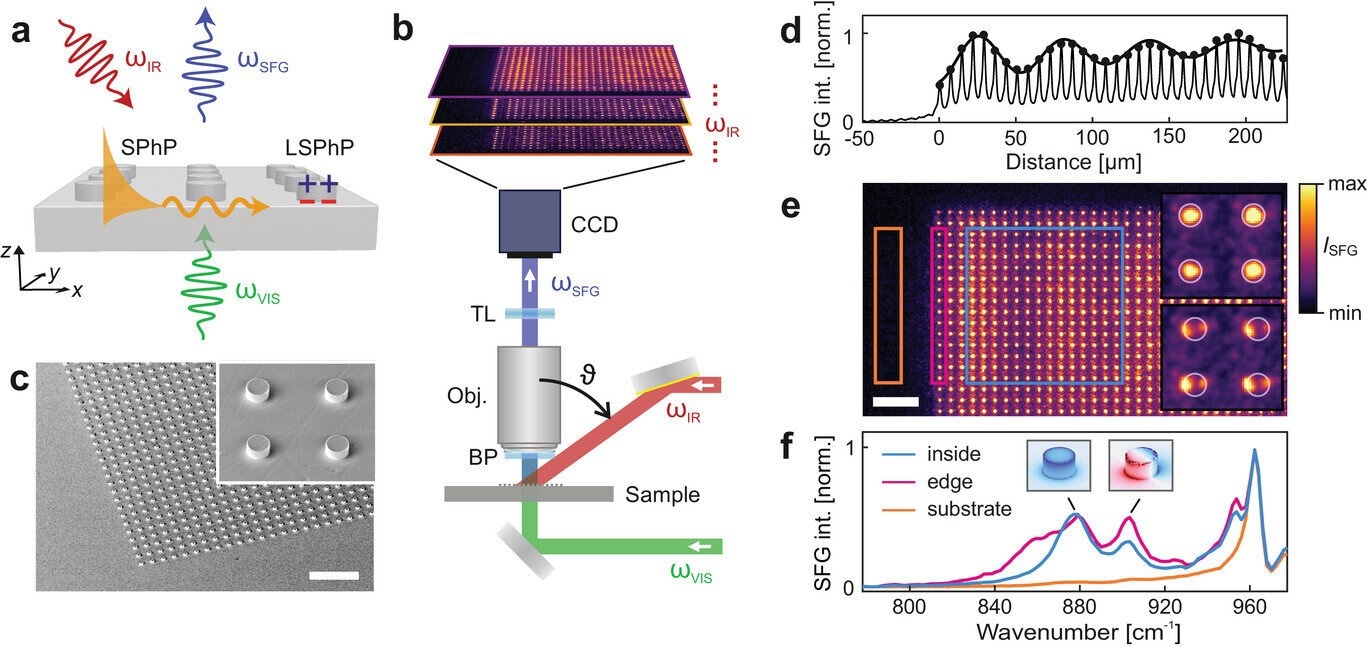Reviewed by Lexie CornerAug 14 2024
Researchers from the Department of Physical Chemistry at the Fritz Haber Institute of the Max Planck Society have achieved a significant advancement in nanotechnology, as detailed in their latest study published in Advanced Materials.
 Sum-frequency spectro-microscopy of phonon polaritons in SiC micropillar arrays. Image Credit: Advanced Materials (2024). DOI: 10.1002/adma.202312507
Sum-frequency spectro-microscopy of phonon polaritons in SiC micropillar arrays. Image Credit: Advanced Materials (2024). DOI: 10.1002/adma.202312507
The study introduces a groundbreaking microscopy technique that enables the visualization of nanostructures and their optical characteristics with unprecedented clarity and detail.
Metamaterials, engineered at the nanoscale, possess unique features not found in naturally occurring materials. These features arise from their nanoscale building blocks, which were previously challenging to examine directly due to their size being smaller than the wavelength of light. The team's study overcomes this limitation by employing a novel microscopy technique that reveals both the nano and macro structures of these materials.
The study's primary breakthrough lies in a new method that enables the observation of features previously too small to view with standard microscopy. By using light in innovative ways, the researchers discovered how to "trap" one color of light within the structure and detect it by combining it with a second color that can exit the structure. This technique provides unprecedented insight into the nanoscale optical properties of metamaterials.
This achievement, the result of nearly five years of focused research and development at the Fritz Haber Institute, leveraged the unique properties of the Free Electron Laser (FEL). The new microscopy method allows for a deeper study of metasurfaces, paving the way for technological advancements such as improved lens design and the development of flatter, more efficient optical devices.
This discovery significantly enhances the understanding of metasurfaces and opens the door to creating innovative light sources and designing coherent thermal light sources.
The research team stated, “We are just at the beginning, but the implications of our work for the field of flat optics and beyond are immense. Our technique not only allows us to see the complete performance of these nanostructures but also to improve upon them, shrinking 3D optics down to 2D, and making everything smaller and flatter.”
Journal Reference:
Niemann, R., et. al. (2024) Spectroscopic and Interferometric Sum-Frequency Imaging of Strongly Coupled Phonon Polaritons in SiC Metasurfaces. Advanced Materials. doi.org/10.1002/adma.202312507